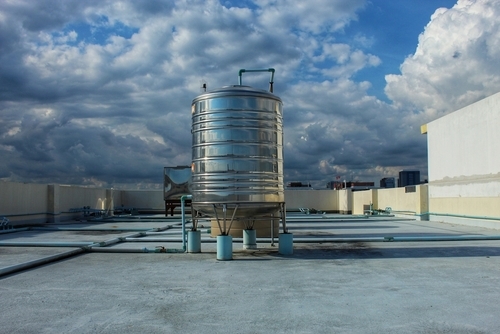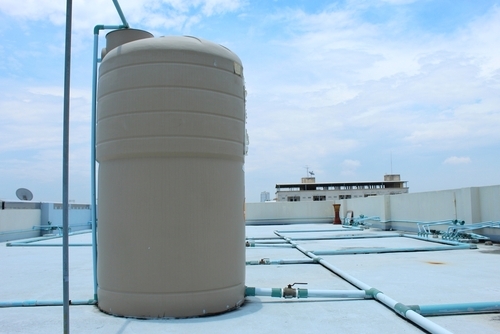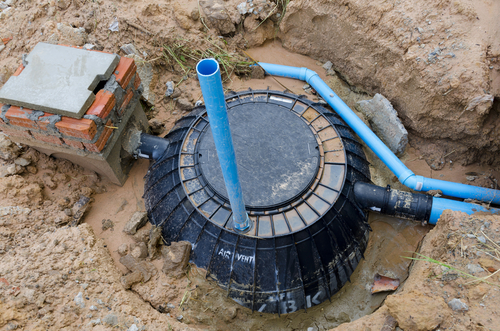Vastu Shastra | Home Water Tank Placement | Tips for Placement | Overhead Tanks | Positives | Negatives | Underground Tank | Negatives | Positives | Directions | Tips | Colour Recommendation | Placement Direction | What Specialists Say | Remedies
To achieve positivity and happiness in every room of your home, Vastu shastra recommends the right shades, format, shape, and directions. According to Vastu, the family residing in a house is influenced by the energy a home must include being a happy house. And hence it is essential to consider Vastu’s tips for every aspect of a place.
Read all about, what Vastu Shastra says about North West facing homes and offices!
Since water is one of the five elements – Air, Water, Fire, earth, and space, the placement of water tanks, according to Vastu, plays an immense role. The house sustains peace and benefits its people enormously when Vastu places these five elements.

Because the placing of water may considerably impact the flow of energy, it is crucial to position overhead water tanks by Vastu’s principles. However, if they are distributed unevenly, it alters the equilibrium and opens the door to several problems.
So, in this blog, let’s learn everything about home water tank placement, according to Vastu Shastra.
Vastu Shastra Explained
For structural building plans, we now engage civil engineers. Our residential space and interior are designed with the aid of architects. However, for countless years, Vastu specialists served as our very own civil engineers and architects.
They contributed to the planning of many structures, including forts, temples, and buildings. Vastu advice was often sought after by kings and rich people to make their dwellings livable. Numerous Sanskrit-written texts on Vastu Shastra are still in existence. Even nowadays, millions of households in India seek the assistance of Vastu professionals while building homes.
Our world is composed of the five elements Akash (space), Vayu (air), Agni (fire), Jal (water), and Prithvi (Earth) (Panchatatva). According to VASTU Shastra, we must balance the components in our environment and match our house or apartment with nature if we want to enjoy a prosperous, happy, and satisfying life.
Vastu Shastra for Home Water Tank Placement
One of the numerous elements that support balance in Panchatatva is the placement of water tanks in our homes.
In modern homes and buildings, overhead water tanks, especially plastic ones, are now a very typical component for the storage of water. These overhead tanks are available in a wide range of shapes and sizes. They also can have the capacity to store hundreds of gallons of water. This giant water storage capacity is crucial because it could impact the home’s energy flow.
A home’s improper placement of a rooftop water tank can potentially have adverse financial and health effects. Similarly, positioning a rooftop storage tank in line with Vastu principles may enhance the well-being and prosperity of the property. And that is precisely why it is essential to know the rules of Vastu shastra when placing a water tank.
Water tanks can produce various outcomes when positioned in various places and directions. The placement of the water tank will have consequences on the impact, which can be positive or negative.
The majority of people store their water tanks either overhead or underground. Both behave differently in various locations according to the water tank’s Vastu.
Keep These Seven Tips In Mind For Home Water Tank Placement
According to Vastu, something just as simple as the location of a water tank can make or break your home’s livability rating.
Vastu advises against being irrational when building homes or other structures. Every decision made about building must adhere to Vastu principles; otherwise, it may disrupt the lives of those who live and work there.
The tips below will indeed prove to help make your decision.
1. Position and Orientation Matter
Water tanks vary widely from one another. Although it may seem weird, water storage tanks’ nature and Vastu implications vary. Water is regarded as an element in underground water tanks that we mainly use as reservoirs. Overhead tanks, however, behave like earth elements. Therefore, according to Vastu, even though both types hold water, their position and orientation must differ.
2. Decide The Placement While Designing Blueprint
The construction blueprint design phase is the ideal time to decide on the location of the water tank. We frequently overlook Vastu compatibility in favor of making last-minute changes to the design and strategy. It affects the property’s overall Vastu alignment and raises the price. The flaw can sometimes become irreparable.
3. Undoing The Vastu Harm Is Difficult
It is never simple to undo the harm caused by an improperly positioned water tank.
We cannot simply move the tank to a good location and assume Vastu is balanced. Correcting Vastu errors occasionally necessitates a total renovation of the building. Otherwise, Panchatatva cannot approach, flow, and exit the house correctly.
So, only a Vastu specialist should be consulted.
4. Pay Attention To The energy Coming From The Tanks
Avert any lousy energy coming from water tanks.
Due to different factors, including selecting tanks of the wrong colors, failing to use covers, not frequently cleaning tanks, and others, negative energy may emanate through overhead water storage tanks.
White, grey, and yellow are the perfect colors for rooftops or terrace tanks. Red, green, and orange are the colors for such tanks that are the most unfavorable.
5. Tips For Plumbing
Use different and isolated pipelines for various water inlets and outlets. Consider the plumbing systems that provide water to the bathroom, kitchen, and garden. The outlet pipes in the kitchen and bathroom shouldn’t be the same.
6. Tips For Direction Of Underground Water Tank
Nature’s water elements align in the North and northeast. Therefore, underground water tanks in your home must be placed in one of these two locations. For building and putting underground water reserves, North is the optimum direction; if it is not practical, Vastu experts advise North-East or East orientations.
Water elements can be balanced and aligned by facing west. Water tanks cannot be positioned in the South, as per Vastu.
7. Tips For Direction Of Overhead Water Tanks
The southwest direction is the ideal location for earth components. Therefore, the overhead tanks should be placed toward the southwest, west, or south because they are earth elements. Avoid the North altogether when installing overhead tanks.
Overhead Home Water Tank Placement

Typically, overhead water tanks are installed on a home’s roof. As a result, the house is under a lot of pressure. This is the reasoning behind choosing the right site for it strategically.
Take a look at these tips below:
Do’s For Overhead Tanks
- The home’s southwest or west corner is where the overhead water tank must be placed for the best results.
- You should position the water tank mainly in the south or northwest if the southwest or west corners of the house are unavailable.
- If the tank is situated in the northwest, make sure it is as compact as possible.
- Three feet should separate your water tank from the northwestern corner.
Don’ts For Overhead Tanks
- The northeast corner is forbidden by the Vastu shastra when it comes to overhead water tanks. That is why it would be preferred if you never put the tank there.
- It is also not advised to put the water tank within the southeast corner or the middle because doing so could lead to accidents and money loss.
Some more tips:
Never put a water tank over your kitchen, front door, or bedroom. Such behavior may result in unneeded health and financial issues. Ensure there aren’t any water leaks from the tank if it is positioned in the southwest corner.
Underground Home Water Tank Placement

The ground beneath the home is typically dug up to construct the underground tank. The floor can be dug up in some designated sites. Before you dig a hole for your tank, make sure you stick to the rules of the underground water tank’s Vastu.
Do’s Underground Water Tanks
- The tank should be placed on the northeast side of the plot in its direction.
- Think about constructing your tank with the north and east in mind.
Don’ts For Underground Water Tanks
- An underground water tank should never be installed in some locations because it can have severe negative consequences.
- Never find an underground tank within the south because it can lead to mental health problems.
- Also, don’t use an underground tank throughout your house’s northwest, southwest, and southeast corners.
Directions Of Underground Water Tanks And What They Imply
| Northeast | Every Kind of Joy and Prosperity |
| North | Acquiring Wealth, Joy, And Prosperity |
| West | Wealth and Prosperity. |
| East | Wealth accumulation; a penchant for spiritual science and concerns. Heightened concerns regarding your health |
| Sout | Mental illness. |
| Northwest | Conflict, theft, and descendants harmed mental stress, and wealth loss. Loss of life’s balance |
| Southwest | loss of the family’s head of household, violence, utter collapse of businesses or jobs, loss of wealth, and family conflicts may result in dissolution. |
| Southeast | Wealth Loss. Children in trouble Family disputes (women might suffer more). |
| Centre | possible bankruptcy and the breakdown of the family. |
Some More Tips On Underground Water Tanks
Vastu experts highly suggest Pooja before digging the earth. On the other hand, you shouldn’t ever dig in the soil on a Tuesday. Another consideration is to eliminate any leakage or spillage and to keep the tank clean at all times.
You should use the best Vastu Shastra practices for locating underground and overhead water tanks in your home now that you’re aware of them. This can have enormous advantages for your well-being and the safety of your family members.
Home Water Tank Placement According To Vastu – Color Recommendations

Vastu colors, significantly affect how individuals and their surroundings feel psychologically. If you want to feel revitalized and lead a healthy life, having the proper ratio of Vastu colors in your house and surroundings is essential. You can also incorporate suitable Vastu colors in water appropriate achieve the most satisfactory outcomes.
- The ideal colors for overhead water tanks facing west are white, yellow, grey, and black. Refrain from using the hues red, orange, green, and brown.
- The ideal colors for something like an overhead water tank facing southwest are yellow, grey, and white. Avoid tones like orange, green, brown, blue, and black as much as possible.
- Colors like red, yellow, green, orange, and brown are ideal for overhead water tanks that face south. Avoid using the colors blue, white, grey, and black.
- Any light shade of brown or green is ideal if the tank faces northeast.
Home Water Tank Placement According To Vastu – Which Directions To Avoid?
Suppose somehow the overhead water tank is put in the wrong direction. In that case, the families may have several problems and challenges. Therefore, it is mandatory to be very cautious while choosing a location for an above-water storage tank in your home.
Selecting the best spot to install this tank is the first step. If something has been installed wrongly, moving them could not be easy.
You should avoid placing water tanks in the directions stated below, according to Vastu:
- The southwest.
- The south direction of the house.
- The southeast.
- The east.
- The northeast direction.
- And the north.
What Do Vastu Specialists Say About Water Tank Vastu?
Experts have provided Water tank Vastu ideas that help improve the home’s balance. To improve the Vastu of any water tank, use the following Vastu advice.
- Make sure the water tank is frequently cleaned at all times. It ensures that no bad energy gathers around the tanks.
- The tanks should always be completely covered.
- Verify that there are no leaks or seepages in the water tanks.
- Ensure the bathroom or kitchen is not directly above the overhead tank.
- Try to keep the pipes and chambers for providing water to the kitchen and bathroom separate.
- Ensure the septic tanks and the underground water tank are not situated in the same area. It raises the likelihood of contamination and affects the energy flow around it.
- Even if plastic water tanks are the most popular, if at all feasible, try to choose a concrete or metal water storage tank for the most outstanding results.
Vastu Remedies for Incorrect Water Tank Placement
What can be the solution for a water tank that hangs over the edge? Only shifting the tank’s orientation in the right place will solve this issue and produce positive outcomes. If you cannot move the tank, you can also try alternative options. You can choose the best option based on your home’s various components.
If you are doubtful of the most appropriate steps to mitigate the effects of the overhead water tanks Vastu dosh, consider speaking with an expert to resolve the problem.
Now understand how to properly erect an above-water and subterranean water tank using water tank Vastu! The same reason that this is done carefully and accurately is that, depending on where it is placed, it may leave both positive and negative footprints on the people who live there.
As you can see, many guidelines are available to ensure that Vastu positions all water tanks. Nevertheless, keep in mind that these apply to everyone. Since every property is different, getting a tailored Vastu consultation for each one is best.
Don’t forget to contact a Vastu expert if you or a member of your family or circle of acquaintances plans to construct a home.
